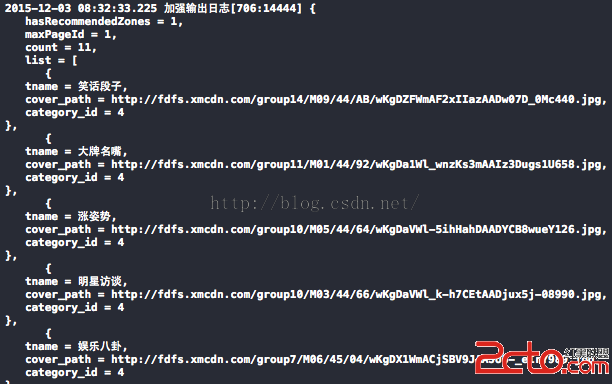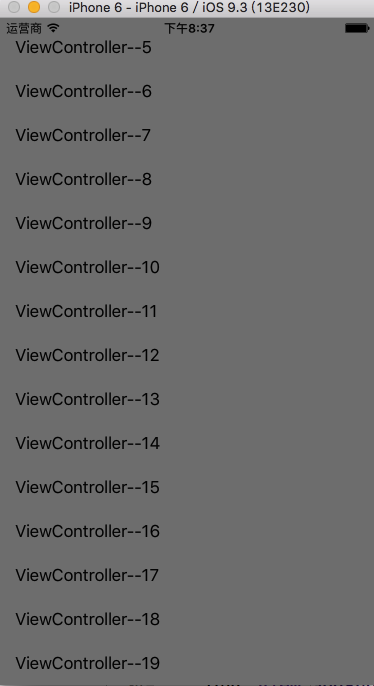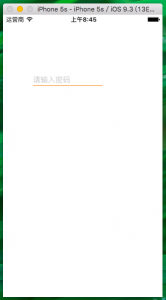iOS中 加強日志輸出 開發技術總結
編輯:IOS開發綜合
對於那些做後端開發的工程師來說,看LOG解Bug應該是理所當然的事,但我接觸到的移動應用開發的工程師裡面,很多人並沒有這個意識,查Bug時總是一遍一遍的試圖重現,試圖調試,特別是對一些不太容易重現的Bug經常焦頭爛額。而且iOS的異常機制比較復雜,Objective-C的語言駕馭也需要一定的功力,做出來的應用有時候挺容易產生崩潰閃退。一遍一遍的用XCode取應用崩潰記錄、解析符號,通常不勝其煩,有時還對著解析出來的調用棧發呆,因為程序當時的內部狀態常常難以看明白,只能去猜測。
對於真機,日志沒法保存,不好分析問題。所以有必要將日志保存到應用的Docunment目錄下,並設置成共享文件,這樣才能取出分析。
導入第三方:AFNetWorkinng
- (void)viewDidLoad
{
[super viewDidLoad];
AFHTTPRequestOperationManager *manager = [AFHTTPRequestOperationManager manager];
[manager GET:@http://mobile.ximalaya.com/m/category_tag_list?category=entertainment&device=iPhone&type=album parameters:nil success:^(AFHTTPRequestOperation *operation, id responseObject) {
NSLog(@%@, responseObject);
} failure:^(AFHTTPRequestOperation *operation, NSError *error) {
NSLog(@%@, [error localizedDescription]);
}];
}
給其寫一個類目:Foundation+Log.m
#import@implementation NSDictionary (Log) //+ (void)load //{ // NSLog(@11); //} - (NSString *)descriptionWithLocale:(id)locale { NSMutableString *str = [NSMutableString string]; [str appendString:@{ ]; [self enumerateKeysAndObjectsUsingBlock:^(id key, id obj, BOOL *stop) { [str appendFormat:@ %@ = %@, , key, obj]; }]; [str appendString:@}]; // 刪除最後一個, NSRange range = [str rangeOfString:@, options:NSBackwardsSearch]; [str deleteCharactersInRange:range]; return str; } @end @implementation NSArray (Log) - (NSString *)descriptionWithLocale:(id)locale { NSMutableString *str = [NSMutableString string]; [str appendString:@[ ]; [self enumerateObjectsUsingBlock:^(id obj, NSUInteger idx, BOOL *stop) { [str appendFormat:@ %@, , obj]; }]; [str appendString:@]]; // 刪除最後一個, NSRange range = [str rangeOfString:@, options:NSBackwardsSearch]; [str deleteCharactersInRange:range]; return str; }@end
最終效果:

小技巧:iOS - 將控制台Log日志轉為輸出為文本文件
1.在AppDelegate.m中創建函數實現以下代碼塊:
- (void)redirectNSlogToDocumentFolder
{
NSArray *paths = NSSearchPathForDirectoriesInDomains(NSDocumentDirectory, NSUserDomainMask, YES);
NSString *documentDirectory = [paths objectAtIndex:0];
NSString *fileName = [NSString stringWithFormat:@MrNSLog.txt];// 注意不是NSData!
NSString *logFilePath = [documentDirectory stringByAppendingPathComponent:fileName];
// 先刪除已經存在的文件
NSFileManager *defaultManager = [NSFileManager defaultManager];
[defaultManager removeItemAtPath:logFilePath error:nil];
// 將log輸入到文件
freopen([logFilePath cStringUsingEncoding:NSASCIIStringEncoding], a+, stdout);
freopen([logFilePath cStringUsingEncoding:NSASCIIStringEncoding], a+, stderr);
}
2.在didFinishLaunchingWithOptions中調用 :
[self redirectNSlogToDocumentFolder];
最後配置共享文件夾:
在應用程序的Info.plist文件中添加UIFileSharingEnabled鍵,並將鍵值設置為YES。將您希望共享的文件放在應用程序的 Documents目錄。一旦設備插入到用戶計算機,iTunes9.1就會在選中設備的Apps標簽中顯示一個File Sharing區域。此後,用戶就可以向該目錄添加文件或者將文件移動到桌面計算機中。如果應用程序支持文件共享,當文件添加到Documents目錄後,應用程序應該能夠識別並做出適當響應。例如說,應用程序可以將新文件的內容顯示界面上。請不要向用戶展現目錄的文件列表並詢問他們希望對文件執行什麼操作。
- 上一頁:iOS 新特性分列式 之 iOS 6.x - 主要內容:自動布局、集合視圖、UI 狀態保持
- 下一頁:[IOS 開發]基本 UI 控件詳解 (UIButton | UITextField | UITextView | UISwitch)
相關文章
+



